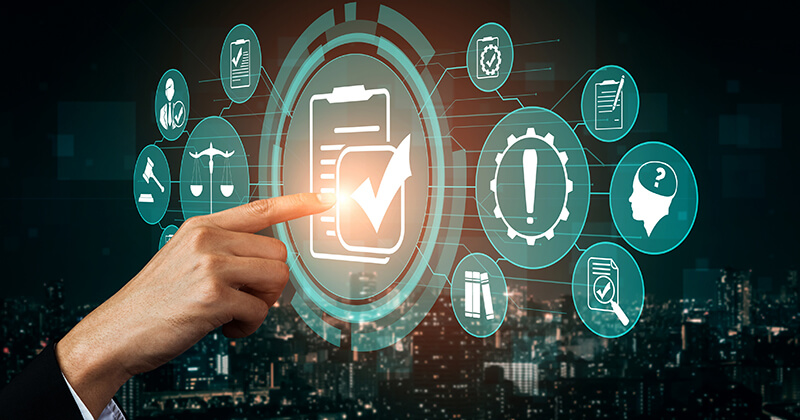Digital Stagnation in the Government Sector
The public service delivery digitalisation is globally in demand as the world shifts towards cloud data operation

By implementing digitalisation, governments can provide services that meet the growing demands of citizens and businesses.
Where we sit
For over a decade (2011 IR4.0), the bugles have been blaring with the arrival of the next industrial revolution. As a part of this movement, the facilitating agent has been digitisation, the full-on deployment of automation. Digitisation is the binding agent that creates one coherent IR4.0 model. However, the reality is that the ground is scattered with enterprises that are in varying stages of IR3.0 data processing or have retained non-automated environments. In the case of industrial enterprises, digitisation efforts are driven by budgets that are defended by value generation.
However, in the public sector, governments operate differently because automation/digitisation choices are fueled by political influence. In other words, what gets digitised must first support campaign promises and, secondly, must support the voting bodies. Even as recent as 2018, Business World stated that governments placed digitisation on the back burner. This is a far different situation than what is encountered by the private business, which creates digital infrastructure to reduce costs and exploit markets, whether served, unserved or underserved. A closer examination reveals that in cases where governments have made digital initiatives, it has been to automate processes and less pushing its full potential in transparency and information analytic intelligence.
Striving for potential
Small/medium government units are a hotbed of opportunity. However, they are hindered by diverting funds and resources from direct population services to infrastructure that will provide operational support while sustaining the inefficiencies of normality. This situation creates a slow and hesitant state in which digitisation becomes operation-centric, creating latent benefits for citizens. When asked where attention should be given, the answer involves areas where time and resources can be best served through digitisation. However, this benefit jeopardises efforts because staff savings are involved.
It is the same case involving data automation (IR3.0); robotics and artificial intelligence were viewed as a human employment threat and not as a shift in purpose. Eventually, when bold steps are taken, that savings will be achieved through access, expediency and purpose-driven interaction, which will benefit citizens and create a more rewarding work condition (intelligent vs manual toile).
There is, however, a bit of an outside push that affects small/medium government units, resulting from national initiatives and enterprises that fuel the influx of information to which government operates. Examples include birth and mortality records, land ownership changes, routine taxes (fuels, sales, tariffs), customs activities and monetary movements. So if you are pondering, as a government unit, to wait and see, the option may not exist because circumstances may force adoption.

The core capabilities of a digital government lie in the services, processes, decisions and data sharing.
Glimpse inside
Despite the disruption of the pandemic, life continued. We could see firsthand how enabling or disabling that digitisation could be. When conditions restrict normality, the lack of digitisation brings recurring events to a grinding halt. This manifests in emergency measures and compromises with negative monetary and operational consequences. All of which consumes money and resources with ample chaotic confusion, leading to errors and inaccuracies. We have not yet seen the full extent of the chaos created and, to a lesser degree, the lingering disruptive results on resource efficiency.
Those governments that enjoyed even a modest degree of digitisation allowed a degree of quasi-interrupted continuation. An application could be made, a license paid, a report filed, and an inquiry or investigative search could be exercised. It is not always perfect, and it may have had a few bumps along the way, but it was a far cry from having to cope with a static situation that left many dangling loose ends. Many of these outstanding conditions have been lost and are most likely going to resurface unexpectedly in the future.
Movement forward
In the context of small/medium-sized governmental institutions, it is not as simple as converting manual records to a digital format. The transition must consider the many varied interactive relationships engaged regularly and routinely. This can entitle municipalities to consider the general public and the various subordinate communities that will comprise their local governmental unit (LGU). One is most likely thinking of formats, but matters involving control flow rates, information security restrictions, timing and anticipated volumes also need to be accounted for.
These factors create a different set of circumstances than what is happening now. Governments need to look at the full range of services which they offer. Some of these are directly part of the community, while others may be stewardship services that are a part of a much larger governmental unit. In consideration of this examination, one must determine if:

A big part of the initiative will hinge upon digital transformation resources. In the case of private enterprises, the selection of resources will be determined by the policy. However, in the case of governmental units, it is customary that a digital transformation effort would require a public bidding process. First and foremost, it is implausible that the digitisation effort can be made using present governmental resources. Therefore, it will become necessary to seek support and resources from an external enterprise will become necessary. This will not only entail the development of an RFP/RFQ (Request For Bid/Request For Proposal) that produces proposal responses but also an entire review process to ensure appropriate submission compliance. Once an award(s) has been accepted, we are on our way to invoking the digital transitional transformation.

Industry 4.0 envisions a rapid change in technology, industries and processes in the 21st century.
This shows that oversight will be needed and provided consistently across all digitisation endeavours. Because of the interconnected nature of digitisation, as a part of IR4.0, they will ultimately lead to a holistic final framework. In addition, oversight will be responsible for forming consistencies and arbitrating contentions between applications and the digitised data they possess. Satisfaction will be achieved through the right selection, proper supervision and flexibly attentive to the effort.
When push comes to shove
While the prioritisation is heavily influenced by political promises, a relatively healthy degree of push may come from the general public. The pandemic has made us acutely aware that very little of our former physical contact with the government was unnecessary and that a lot could have been done remotely. The movement towards becoming a digitised government needed encouragement. Otherwise, it would be shallow words to mask past practices.
For governments to transition digitally, it will involve a course of process reexamination and the design of controls. It is to ensure that they are secure, possess integrity, retain legitimacy and are expediently exercised. This move means that agencies will need to give routine concentration to digital activities and avoid overlooking items involving their attention. While this may sound reasonable, you might ask yourself how much attention is presently assigned to mundane email? It is not uncommon for emails to go unanswered or, at best, lack a responsible level of response.
This is not a business as usual endeavour but one that shifts attention from a cue standing in front of a window to a virtual cue that adds an element of immediacy.
There is no conclusion
We have our work cut out for us. While we are familiar with daily service routines, the digital transformation requires closer reexamination and reshaping.

Islands will no longer represent digitisation in the government section. Instead, it will take on the embodiment of collective service delivery. This will require collective negotiation on what, where, and in what form digital events will take place. Joint compromise and negotiation will become the keystone to digital implementation success.
About the Author

Jerry Durant is Chairman and Founder of The Clarity Group Global an established advisory consultancy committed to technological and organisational advancement. Clarity Group also is engaged in various progressive ventures involving challenged enterprises recovery, intelligent philanthropic investments and greenfield research.







